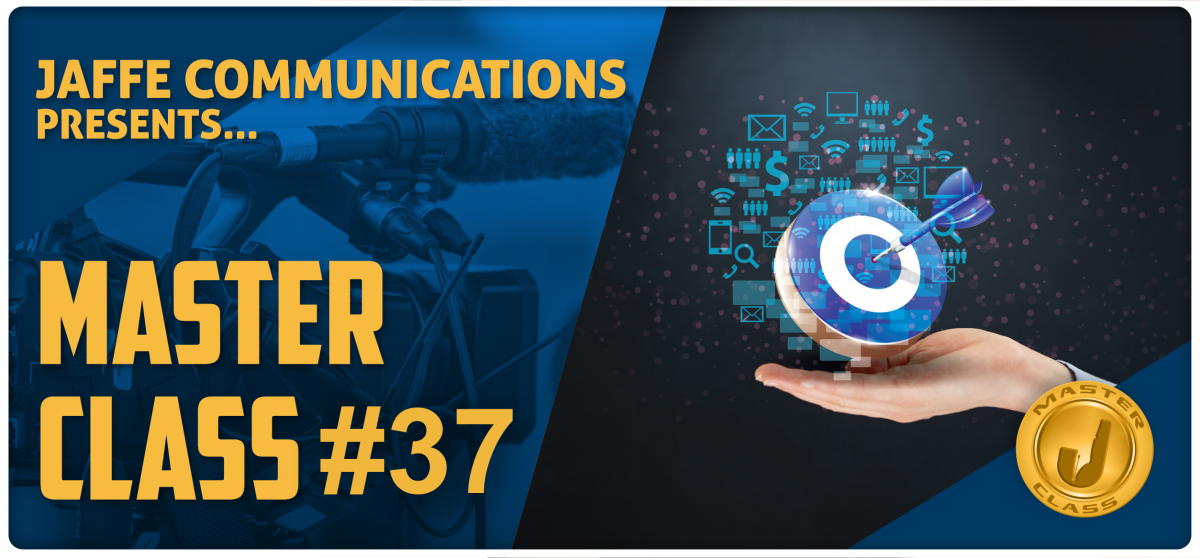
Master Class #37: Reach the Right People
Ever go to a networking event and waste time talking to the wrong people? Like the chatty bartender with the awesome martinis?
Of course.
The same is true when it comes to pitching a great story to the wrong reporter.
Jaffe strongly recommends you do your research and learn as much as you can about a targeted publication and its readership. Then, craft your pitch in a way that highlights the newsworthiness of your story and how it can be direct and immediate interest to their readers/viewers.
And, yes, we have some more tips for you:
- Start by identifying the right journalist to pitch. Use a media database like Cision or Meltwater to find journalists who cover your industry or topic of interest. Paid databases are expensive, opposed to free stuff from Google. So partner with a firm like Jaffe that invests in the right subscriptions.
- Read your targeted journalist's recent articles to get a sense of their interests and writing style. This will help you tailor your pitch accordingly.
- Keep your pitch concise and to the point. Reporters are busy and somewhat cantankerous people, so get to the point quickly before they press "delete" or hang up on you.
- Be specific and provide examples. Don't just say that your story is "interesting" or "newsworthy." Tell the journalist why it is of interest to their audience and provide specific examples.
- Make it easy for the journalist to follow up. Include your contact information in your pitch and offer to provide additional information
if needed. And respond immediately - even if it is a random Sunday and it looks like the Jets are driving at the 20.
- And follow up! It's not unusual for journalists to receive hundreds of pitches every day. So, it's important to follow up with them a few days after you send your pitch. This shows that you're serious about your story and that you're willing to work with them to make it a success.
Here's how we do it in-house:
- Jaffe's account managers send a follow-up email a few days after an initial pitch. In the follow-up email, we politely remind the journalist of the pitch and offer to provide additional information if needed.
- If we don't hear back from the journalist after a week, we send a second follow-up email. However, we are careful not to be too pushy! If we don't hear back from the journalist after a second follow-up, it's best to move on.
If the journalist does respond to us....Yippee! We are always responsive to their requests and provide them with the information they need. And we always, always thank them for their time and consideration.
This is our tried-and-true strategy to get stories published on behalf of our terrific clients.
THE NEW 60
A Jaffe Exclusive
by Andy Landorf & John Colquhoun
